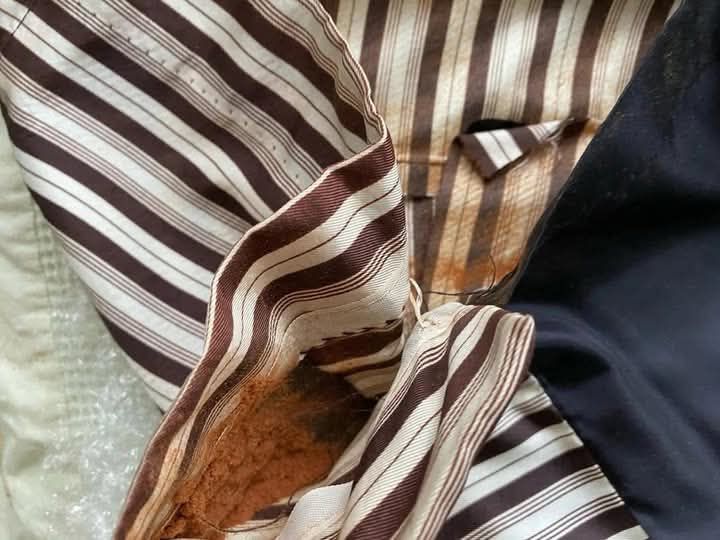ADVERTISEMENT
Sewn with Secrets: The Brown Powder Mystery Inside a Vintage Find
In a world where vintage treasures are often unearthed from attics, estate sales, or hidden corners of thrift shops, there’s something truly special about discovering an item that tells a story—one that’s cloaked in mystery. Imagine finding an old, worn garment tucked away in a forgotten box, only to discover a strange brown powder sewn inside it. What is it? Why was it there? And what secrets does it hold? This intriguing scenario isn’t as far-fetched as it sounds, and it might just unlock a tale of history, intrigue, and perhaps a little bit of mystery. Welcome to a journey through time, where the “brown powder mystery” in a vintage find reveals stories from the past, and perhaps, a surprising truth.
The Allure of Vintage Finds
Vintage treasures—whether they are clothing, jewelry, or accessories—often carry a sense of nostalgia and history. These items have been worn, used, and cherished by people from a different era, each adding a layer of sentiment and intrigue to the object. When a hidden detail like a mysterious brown powder is discovered within a vintage find, it immediately piques curiosity. It raises the question: What was its purpose? Why was it there?
Such a discovery can spark a quest to unravel the story behind the object. The brown powder could be the key to understanding the history, secrets, and sometimes even the cultural practices that once surrounded the object. And, in the case of a vintage garment, it could be sewn in for practical reasons or linked to a more esoteric purpose—both of which can add to its charm and value.
What Could the Brown Powder Be?
There are several possibilities for what this mysterious brown powder could be, and each one opens up new avenues for exploration. Let’s delve into a few potential scenarios:
1. Protective Powder for Preservation
One of the most likely reasons for a brown powder being sewn into a vintage garment is that it was used as a preservative. In the past, people would often use powders, such as talcum powder, chalk, or tobacco leaves, to help keep fabrics from decaying or becoming infested with insects. For example, tobacco was commonly used in the 18th and 19th centuries to prevent moths and other insects from damaging clothing. It was believed that the pungent smell of tobacco acted as a natural insect repellent.
Similarly, chalk or talcum powder may have been used in vintage garments, especially those intended for special occasions, to help absorb moisture or reduce odors. The powder would often be sewn into a lining or hidden inside seams to maintain the garment’s freshness over time.
2. A Token or Symbolic Item
In some cultures, small packets of herbs, powders, or other natural substances were sewn into garments as protective charms or as symbols of good luck. These powders could be associated with spiritual or superstitious beliefs, where people believed certain powders held the power to protect them from evil, ensure fertility, or bring good fortune. These could include things like herbal mixtures, crushed flowers, or even sacred ash.
For instance, in some European cultures, garments were sewn with small sachets of herbs like lavender or rosemary for good health and protection. The brown powder you find might be a remnant of a cultural tradition passed down through generations.
3. Evidence of a Craft or Profession
Sometimes, the contents of a vintage item might reveal the profession or lifestyle of its previous owner. If the powder found inside the garment is particularly fine or unique in texture, it could indicate that the item was associated with a specific craft, such as spice trading, textile production, or even artisanal baking. For example, someone involved in making or packaging spices might have used the fabric to protect or store ingredients, leading to traces of powder being left behind.
In this case, the brown powder could have been a trade-related byproduct. If the garment belonged to someone in a particular profession, it might offer clues about their daily life, their occupation, and the time period they lived in.
4. A Hidden Message or Mark of Identity
In rarer cases, the brown powder may not have a practical or protective purpose at all. Instead, it could serve as a hidden message or mark of identity. In times of war, political unrest, or economic hardship, individuals sometimes left behind subtle symbols, codes, or secret marks within their belongings to signify their allegiances, beliefs, or even to communicate messages to those who would understand. In this scenario, the powder could be part of a hidden compartment or marking system.
ADVERTISEMENT
ADVERTISEMENT
